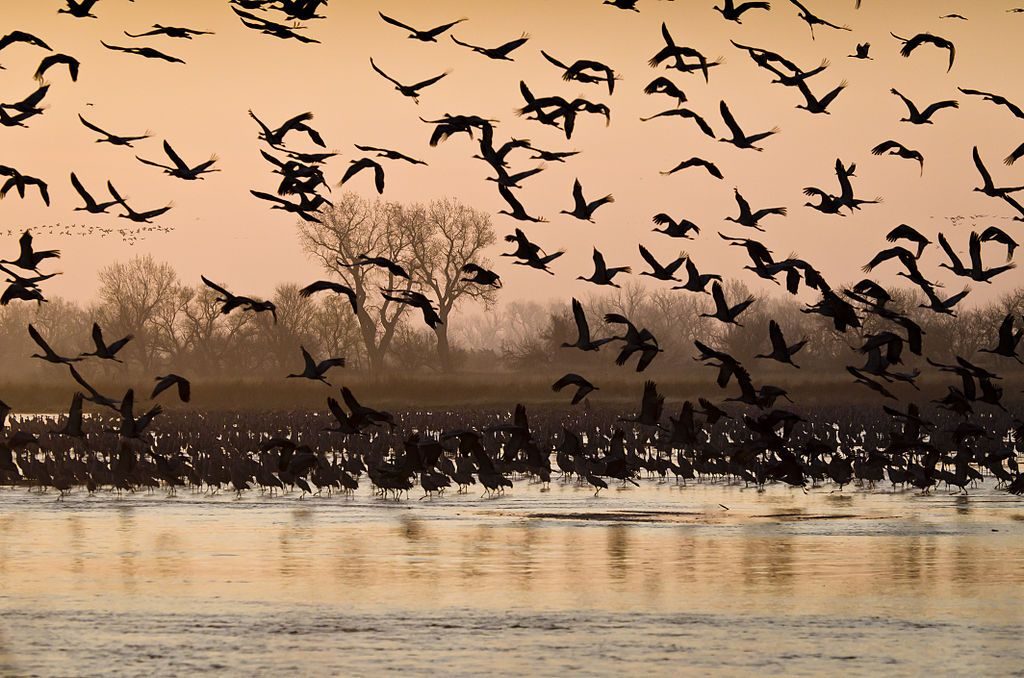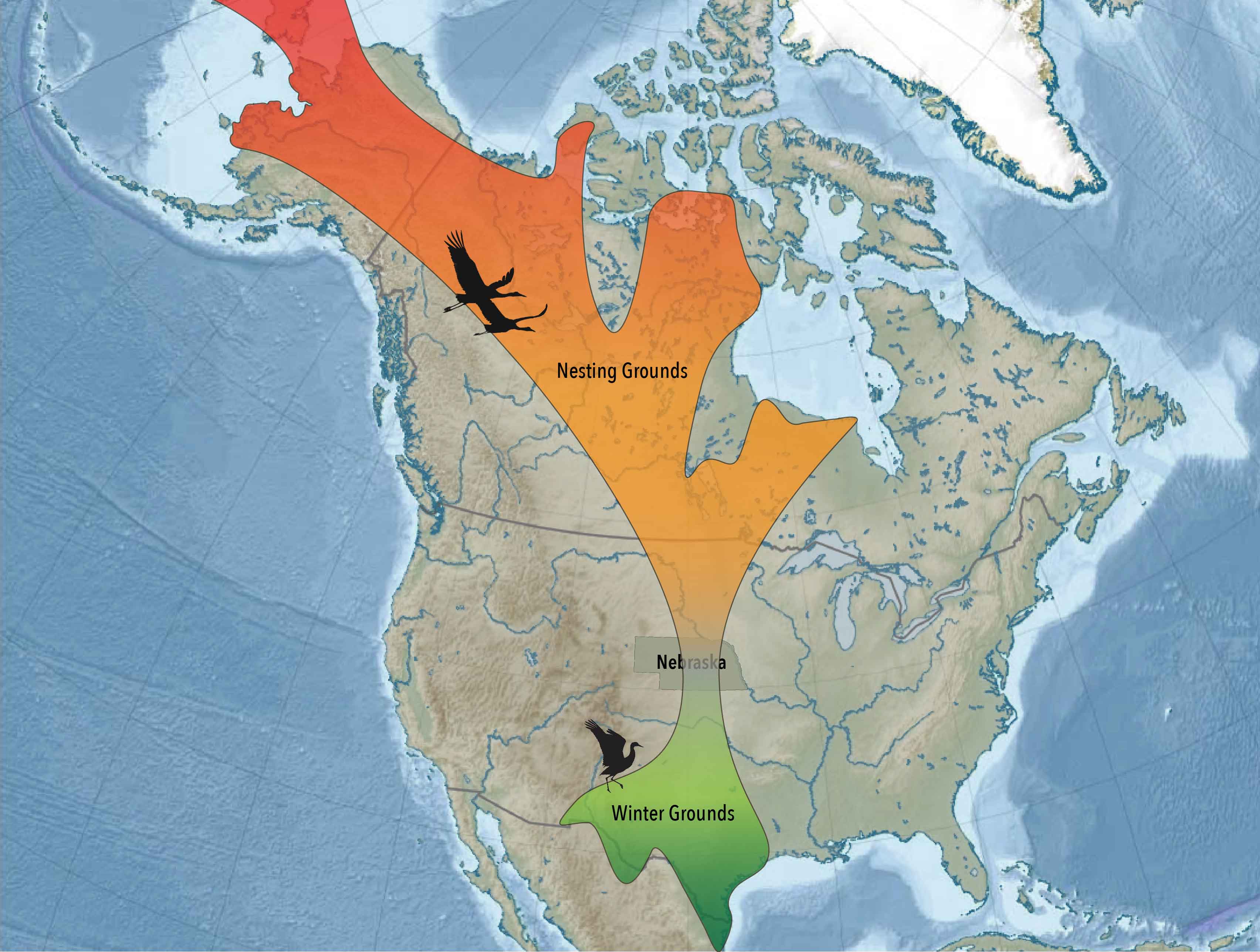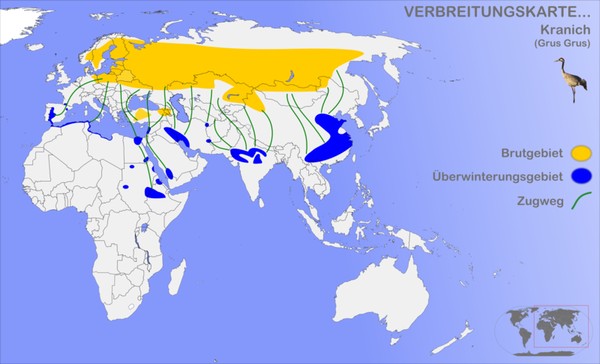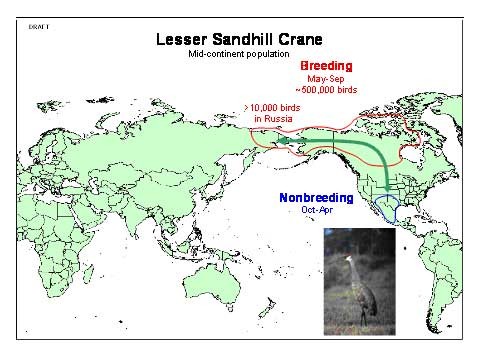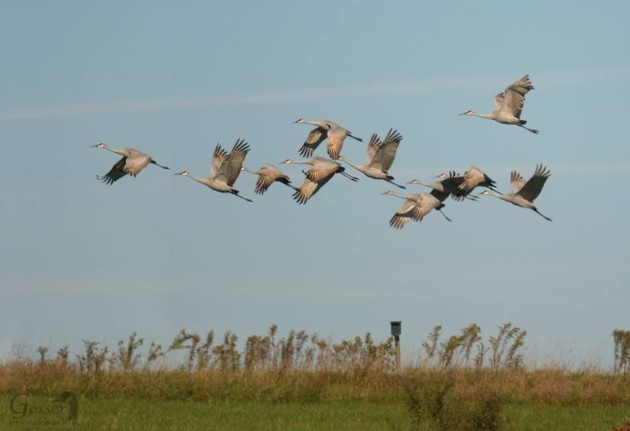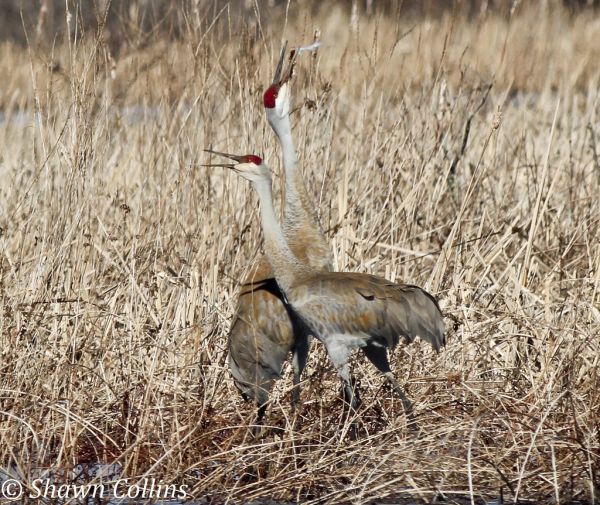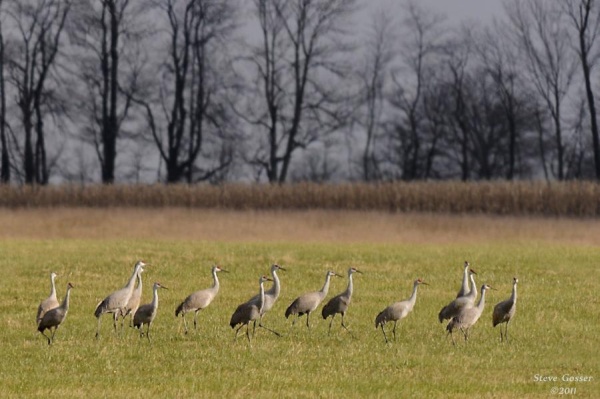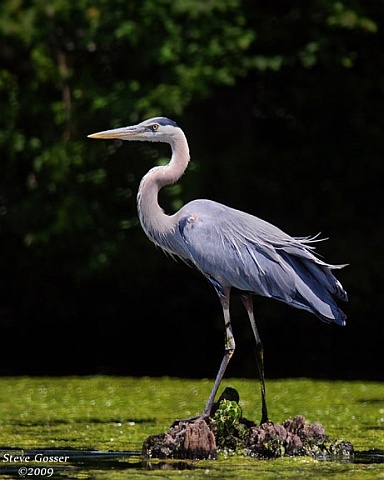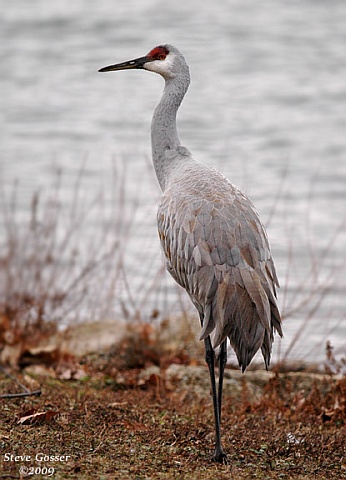In 2011 crane watchers in Homer, Alaska noticed that a single Canada goose was convinced he was a sandhill crane. How did this happen? And can it be undone?
As described by Encyclopedia Britannica, imprinting is a form of learning in which a very young animal fixes its attention on the first object it sees, hears, or is touched by and thereafter follows that object.
Imprinting is especially important for nidifugous birds — species that walk away from the nest shortly after hatching — because they must immediately follow their mother in order to survive. They imprint by sight and the lesson lasts a lifetime. If the first thing they see is their mother or another member of their own species, life is good. If not, they grow up believing they are another species and will never find a mate.
Imprinting happens at different times for different species so wildlife centers use surrogacy techniques, described here at the Wildlife Center of Virginia, to insure that baby birds don’t imprint on humans. If they do they cannot be released in the wild.
Human imprinting is well known among cranes so caregivers in the Whooping Crane Recovery Program dress in crane costumes when in sight of the young birds.
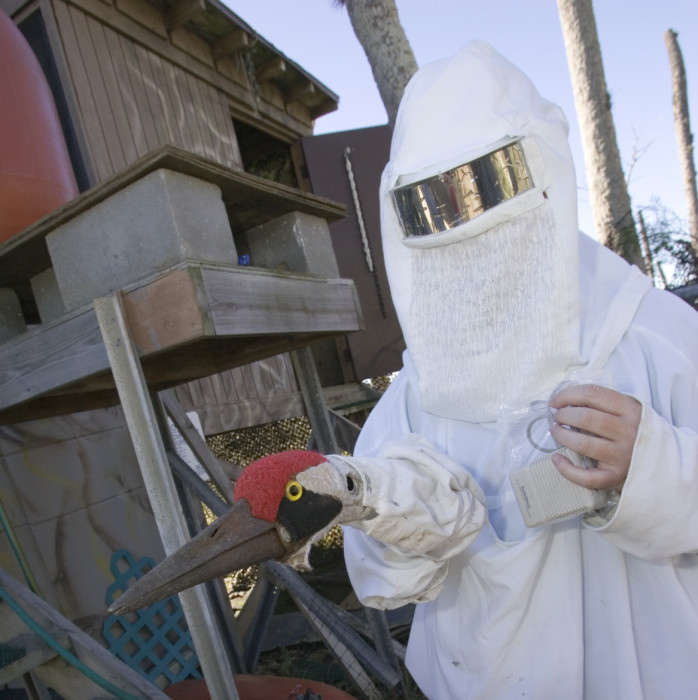
Birds use filial imprinting but there are other forms. Studies have shown that we humans prefer the first computer software we use and then compare all new software to that first and favorite app. It’s a form of imprinting called Baby Duck Syndrome. “I don’t like this; it doesn’t work like Microsoft Word.” Quack! Quack!
As for the Canada goose in the video, observers speculated that the bird’s mother laid his egg in sandhill crane nest. When he hatched he saw a sandhill crane and imprinted on the wrong species. He’s the victim of an imprinting error.
(video by Nina Faust on YouTube. photos from Wikimedia Commons; click on the captions to see the original)
